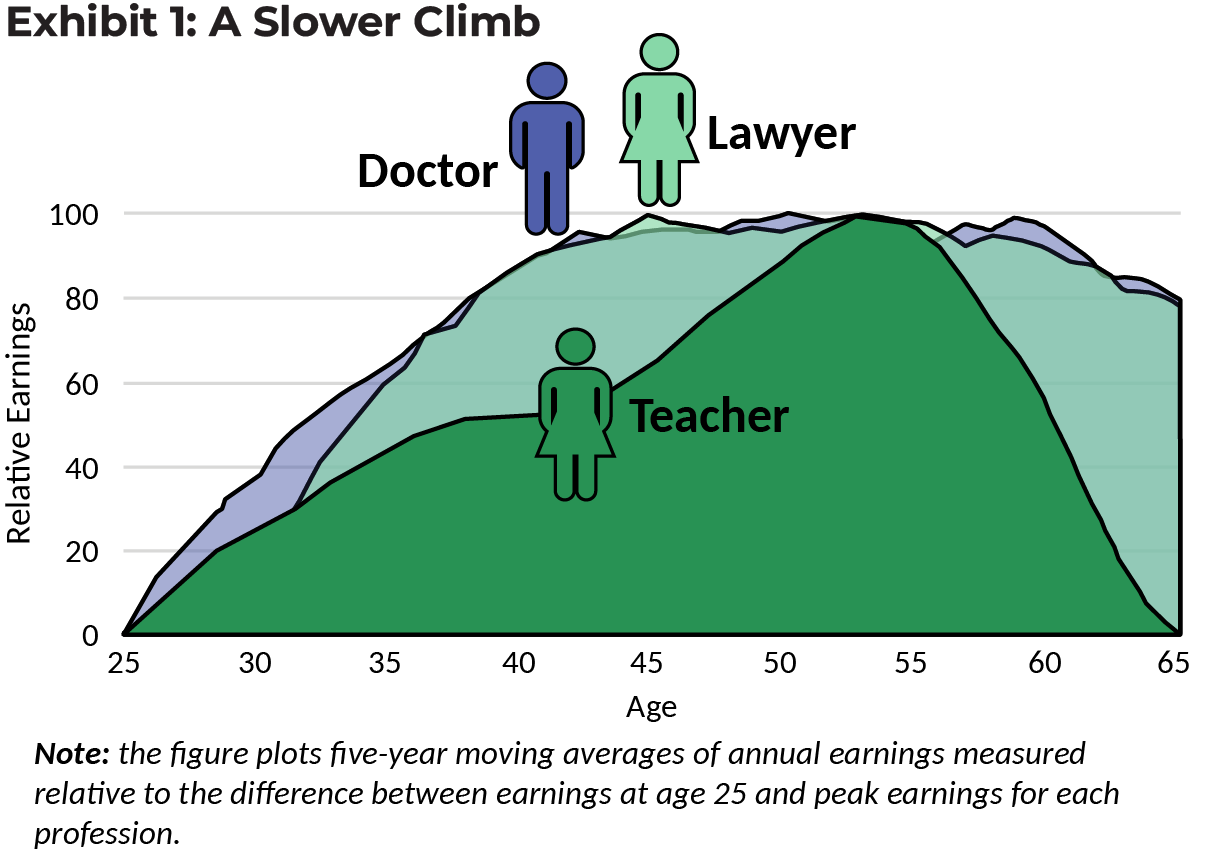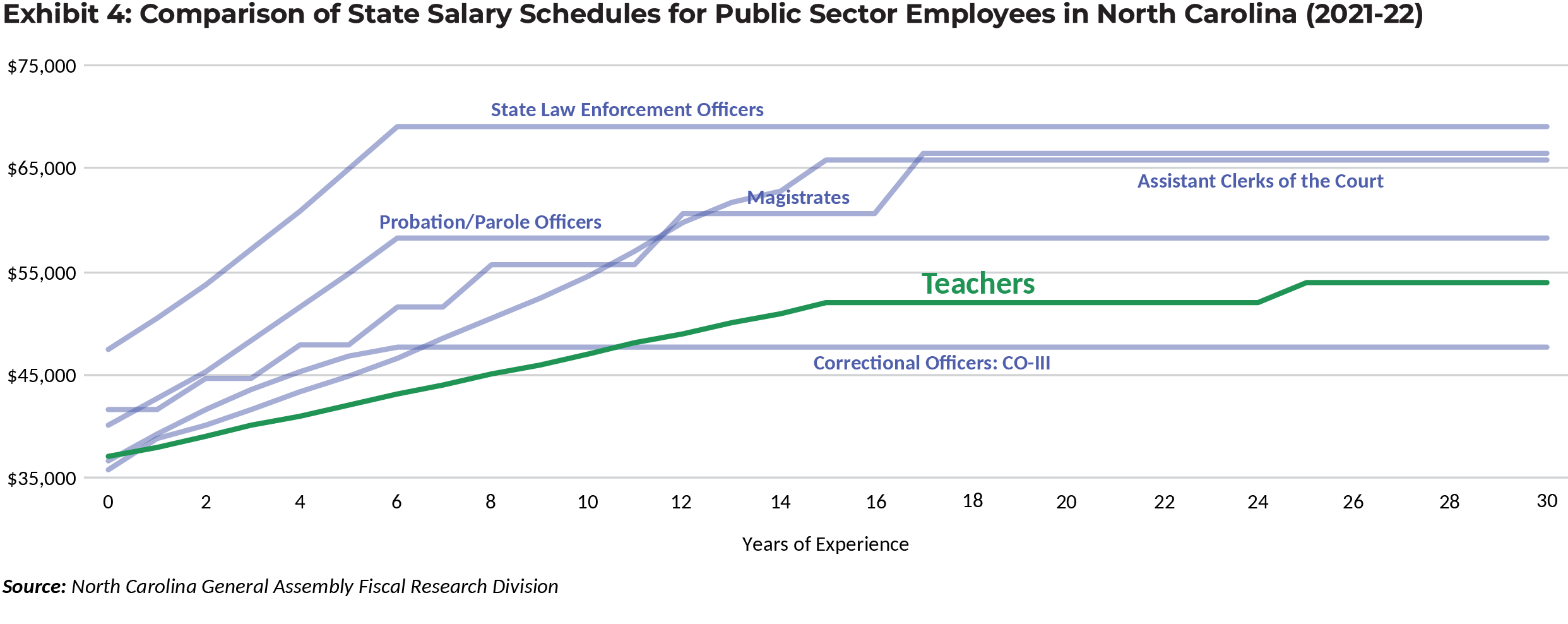Best Practices in Teacher Pay: Front-Loading Base Pay, a Common Practice for High-Skilled Professionals
A comprehensive, professional compensation plan includes layered pay strategies that build on one another to ensure the recruitment and retention of a high-quality workforce. This is the third in a series of blogs highlighting best practices in teacher pay featured in detail in BEST NC’s report, Teacher Pay in North Carolina: A Smart Investment in Student Achievement.
Front-Loading Base Pay to Mirror Other High-Skilled Professions
 In part 1 and part 2 of this teacher pay blog series, we examined how a front-loaded salary schedule aligns with increases professional growth and addresses the biological need to earn a living wage. Front-loading base pay is also a common practice for high-skills professionals in other industries. They are generally rewarded with substantial pay increases earlier in their career, commensurate with the rapid acquisition of skills (see Exhibit 1 to the right).
In part 1 and part 2 of this teacher pay blog series, we examined how a front-loaded salary schedule aligns with increases professional growth and addresses the biological need to earn a living wage. Front-loading base pay is also a common practice for high-skills professionals in other industries. They are generally rewarded with substantial pay increases earlier in their career, commensurate with the rapid acquisition of skills (see Exhibit 1 to the right).
Then, as skill acquisition slows and performance levels out, additional compensation is added based on increased workload or unique, high-demand skills. In education, however, traditional teacher salary schedules require decades of employment to reach an adequate level of base pay. And unlike other professions, such as nursing, there are few opportunities for career growth and added compensation while remaining a teacher.
Another way to visualize this dynamic is to examine the age at which pay peaks. While those working in other high-skilled professions reach their highest pay level by age 40 (or within 10-15 years of experience), teachers enter their 40s with much lower earnings on average than they will make if they stay in the profession for another decade. Teachers also do not hit their peak earnings until around age 55 (or between 25-30 years of experience, about twice as long). The chart below utilizes national data to illustrate this challenge. Importantly, this slow increase in pay for teachers also means that lifetime earnings are reduced, when compared to a front-loaded pay structure.

Top-Tier Candidates Expect a Front-loaded Pay Schedule
Not only is front-loaded pay common practice in many professions, it is also the expectation of top-tier students when they are considering their career options. A survey of college graduates in the top third of their class underscores the role that overall earnings potential plays in deterring top graduates from becoming teachers (see Exhibit 3 below).

Front-Loaded Base Pay for Other Public Sector Professionals
North Carolina’s gradually increasing teacher salary schedule is also misaligned with the front-loaded pay structures of other public sector state employees. Even with a substantial investment in teacher pay between 2014-15 and 2018-19 that halved the time it took for North Carolina teachers to earn $50,000 (from 30 years to 15 years), a recent analysis from the North Carolina General Assembly’s Fiscal Research Division shows that teachers progress more slowly up the salary schedule than other state employees (see Exhibit 4 below). For example, law enforcement officers and prison system employees reach maximum base pay at six years of experience, while teachers do not reach their maximum base salary until 25 years into their careers.

Note: While these data illustrate the need for a steeper salary schedule, in which teachers reach their earning potential much faster, this chart also shows that teacher pay is below that of other state employees, signaling an overall need to increase the competitiveness of teacher pay.


